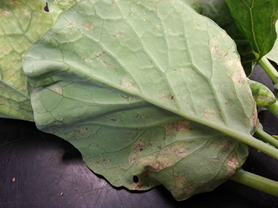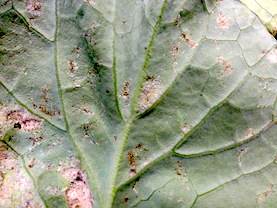Late blight was reported on potato in Erie County, New York and Cambria County, PA (west central) late last week. This is the first report of late blight in PA this season. There are also suspected cases of late blight are being reported on potato and tomato in Lancaster County, PA.
All tomato and potato growers in New Jersey should begin to scout their fields on a regular, if not daily basis. There have been no reported cases of late blight in New Jersey to date! However, all growers (conventional and organic) who have not initiated protectant fungicide maintenance programs should consider doing so. For organic growers, preventative copper applications should be considered. For more information on controlling late blight please see the 2014 Commercial Vegetable Fungicide Recommendations Guide.


